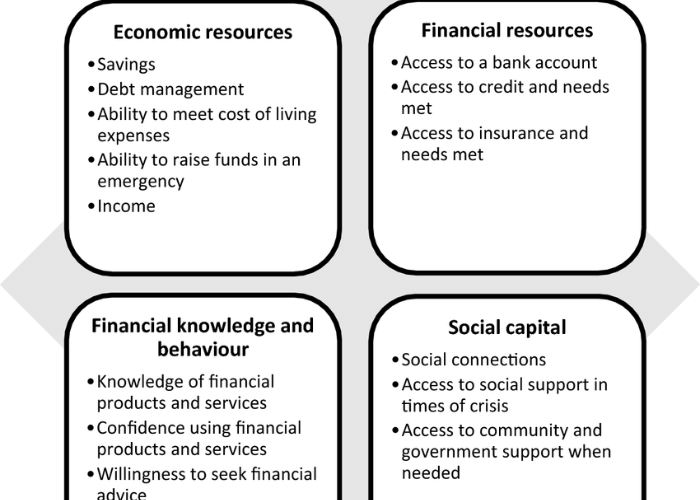In an increasingly interconnected and dynamic global economy, the principles of fiscal policy have taken on a new dimension. The concept of “fiscal fusion” has emerged as a framework that aims to merge various fiscal principles to create a resilient financial future for nations. As economies become more intertwined, traditional fiscal policies need to evolve to address complex challenges such as economic shocks, inequality, and environmental sustainability. This article delves into the concept of fiscal fusion, exploring how the merger of fiscal principles can pave the way for a stronger and more adaptable financial future.
The Evolution of Fiscal Policy
Fiscal policy has long been a cornerstone of economic management for governments worldwide. It encompasses the use of government spending and taxation to influence economic activity. Historically, fiscal policies were often tailored to address specific economic circumstances, such as managing inflation, promoting growth, or reducing unemployment. However, the contemporary global landscape demands a more comprehensive and integrated approach.
Over time, traditional fiscal principles have evolved into more nuanced concepts. For instance, the Keynesian principle of counter-cyclical spending suggests that governments should increase spending during economic downturns to stimulate demand. Conversely, during periods of economic boom, fiscal restraint helps prevent overheating. Similarly, supply-side economics emphasizes reducing tax burdens to incentivize production and economic growth.
The Emergence of Fiscal Fusion
Fiscal fusion is an innovative response to the increasing complexity of economic challenges. It involves integrating various fiscal principles and strategies into a cohesive framework that can adapt to multifaceted economic scenarios. The core idea is to blend the best elements of different fiscal approaches, creating a more resilient system that can navigate uncertainties while promoting sustainable growth.
One key aspect of fiscal fusion is recognizing that fiscal policy cannot exist in isolation. It must be harmonized with monetary policy to achieve optimal results. The coordination of fiscal and monetary policies can mitigate conflicts and enhance the effectiveness of both tools. For example, if fiscal fusion suggests expansionary fiscal measures to counter a recession, central banks can complement these efforts by adjusting interest rates to maintain stability.
Principles of Fiscal Fusion
- Counter-Cyclical Adaptability: Traditional fiscal policies often focus on counter-cyclical measures to address short-term economic fluctuations. Fiscal fusion takes this a step further by incorporating long-term goals into these measures. For instance, during an economic downturn, fiscal fusion might recommend investments in infrastructure, renewable energy projects, and education. This not only stimulates immediate demand but also contributes to long-term economic resilience and sustainability.
- Equitable Distribution: Addressing income inequality and promoting social inclusivity are central to fiscal fusion. It combines progressive taxation with targeted social spending to ensure that the benefits of economic growth are shared more equitably. By using fiscal measures to support education, healthcare, and poverty alleviation, governments can create a more productive and cohesive society.
- Environmental Sustainability: Modern fiscal policies must also grapple with environmental challenges. Fiscal fusion integrates environmental considerations into economic decision-making. This might involve carbon pricing, subsidies for clean technologies, and investments in green infrastructure. By internalizing the costs of environmental degradation, fiscal fusion promotes sustainable development pathways.
- Debt and Deficit Management: Prudent fiscal management is a key tenet of fiscal fusion. It acknowledges that deficits may be necessary during crises but emphasizes responsible borrowing. The fusion approach advocates for a clear plan to manage and reduce debt during periods of economic stability. This prevents the accumulation of unsustainable debt burdens that could hinder future growth.
- Global Economic Interdependence: In an era of globalization, fiscal policies in one country can have far-reaching impacts. Fiscal fusion recognizes the interconnectedness of economies and suggests aligning fiscal strategies with international economic goals. This could involve coordinated efforts to address issues such as trade imbalances and currency fluctuations.
Benefits and Challenges
Fiscal fusion offers several potential benefits, but its implementation is not without challenges. One of the main advantages is its ability to provide a comprehensive solution to complex economic issues. By combining principles, governments can address multiple objectives simultaneously, fostering a more holistic approach to policymaking.
Moreover, fiscal fusion promotes long-term thinking. By integrating sustainability and equity into fiscal decisions, it helps nations move away from short-sighted policies that prioritize immediate gains over future stability. This is especially crucial given the urgency of challenges such as climate change and demographic shifts.
However, challenges abound. Implementing fiscal fusion requires a high level of political consensus and cooperation. It demands that policymakers transcend partisan divides and prioritize the collective good over short-term electoral considerations. Additionally, measuring the impact of fused fiscal policies can be intricate, making it essential to develop effective evaluation frameworks.
Case Study: Nordic Model and Fiscal Fusion
The Nordic countries offer a compelling example of how fiscal fusion principles can be successfully implemented. These nations have merged various fiscal strategies to create resilient economies with high levels of social welfare. The Nordic model combines progressive taxation, robust social safety nets, and investments in education and innovation.
This fusion approach has led to impressive outcomes. The Nordic countries consistently rank high in global happiness and quality of life indices. Their economies exhibit steady growth, low levels of inequality, and a commitment to environmental sustainability. This success can be attributed to their ability to balance counter-cyclical measures with long-term investments in human capital and social infrastructure.
Conclusion
Fiscal fusion represents a paradigm shift in economic policymaking. As nations grapple with increasingly intricate challenges, the integration of fiscal principles offers a roadmap to a more resilient financial future. By merging counter-cyclical adaptability, equitable distribution, environmental sustainability, prudent debt management, and global economic cooperation, governments can navigate uncertainty while fostering sustainable and inclusive growth.
However, realizing the potential of fiscal fusion demands visionary leadership, international collaboration, and a commitment to evidence-based policymaking. As economies evolve, the principles of fiscal fusion can serve as a lodestar, guiding nations toward economic systems that are not only prosperous but also just and sustainable.
